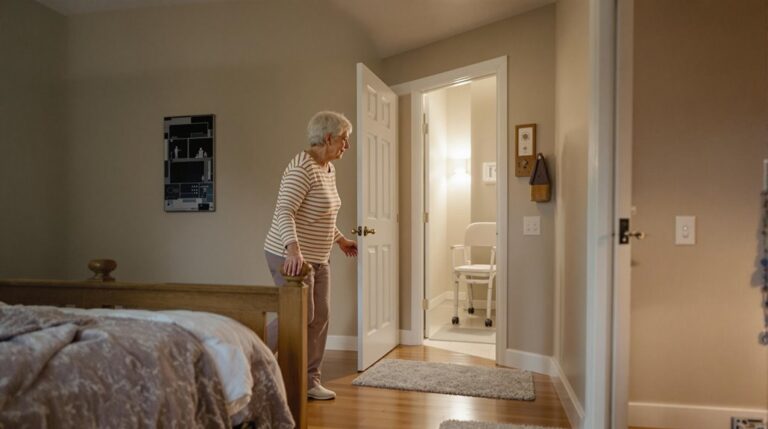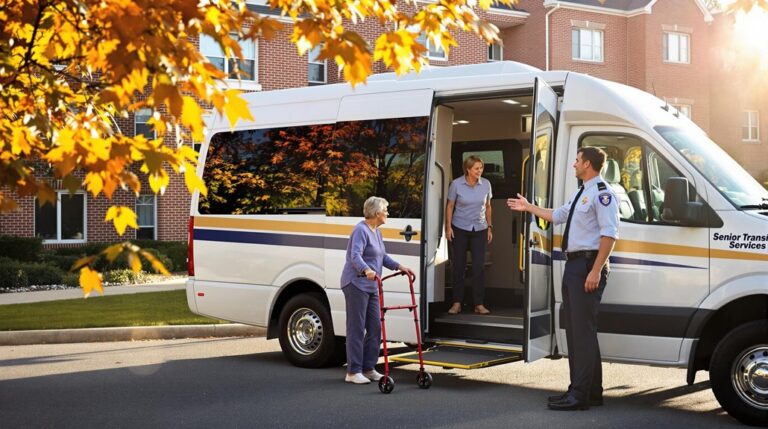A thorough home safety audit serves as the foundation for creating an effective S.A.F.E. plan, protecting both families and property from potential hazards. The systematic evaluation of each room requires careful attention to detail, specialized tools, and a methodical approach to identifying vulnerabilities. By understanding the unique risks present in different areas of the home, residents can implement targeted safety measures and develop robust emergency protocols that could mean the difference between security and catastrophe.
Key Takeaways
- Start with a comprehensive safety assessment using S.A.F.E. Framework tools to evaluate each room’s potential hazards and vulnerabilities.
- Document safety concerns using specialized audit equipment like voltage testers, moisture meters, and digital cameras for accurate evaluations.
- Establish room-specific safety protocols, focusing on high-risk areas like kitchens, bedrooms, and garages with detailed checklists.
- Implement quarterly maintenance schedules for each room, including HVAC inspections, safety device testing, and structural assessments.
- Create detailed emergency maps highlighting evacuation routes, safety equipment locations, and assembly points for each room.
Understanding the S.A.F.E. Framework Components
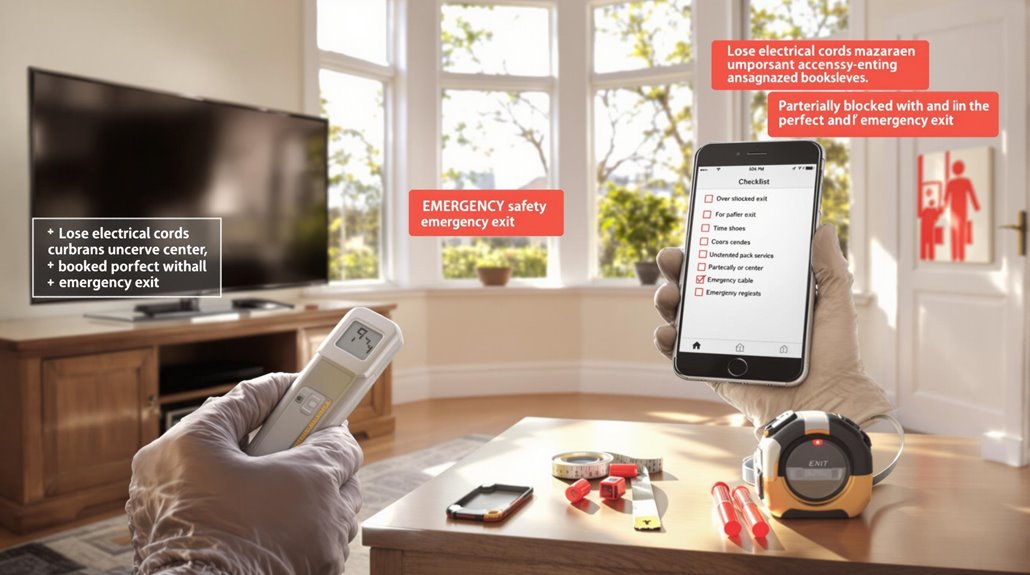
The S.A.F.E. framework integrates standardized tools and thorough safety assessments to evaluate family behaviors and protect vulnerable children. This systematic approach combines safety-focused case planning with ongoing management strategies to address immediate dangers while building long-term protective factors.
At its core, the framework utilizes trauma-informed methodologies and cultural safety practices to guarantee effective interventions across diverse communities. Regular evaluations occur throughout different case stages, incorporating dual assessments of both child vulnerabilities and caregiver protective capacities.
The model emphasizes dynamic risk management through consistent protocols and technology implementation, while maintaining a strong focus on child participation in safety planning. This structured approach enables practitioners to identify, monitor, and address safety concerns systematically while working toward positive family outcomes.
Essential Tools for Your Home Safety Audit
Implementing an effective home safety audit requires an extensive set of specialized tools designed to evaluate potential hazards and identify areas needing improvement.
Professional inspection tools encompass five essential categories: lighting and visibility equipment for dark spaces, electrical safety testing devices to prevent shock hazards, plumbing and moisture detection instruments to identify water-related issues, structural assessment tools for evaluating building integrity, and access and documentation equipment for thorough reporting.
Essential safety equipment includes voltage testers, moisture meters, and gas detectors that help protect both the inspector and occupants during evaluations.
Modern technology, such as infrared thermometers and digital cameras, enhances the accuracy and efficiency of safety assessments while providing detailed documentation for future reference and improvement planning.
Kitchen and Cooking Areas Assessment
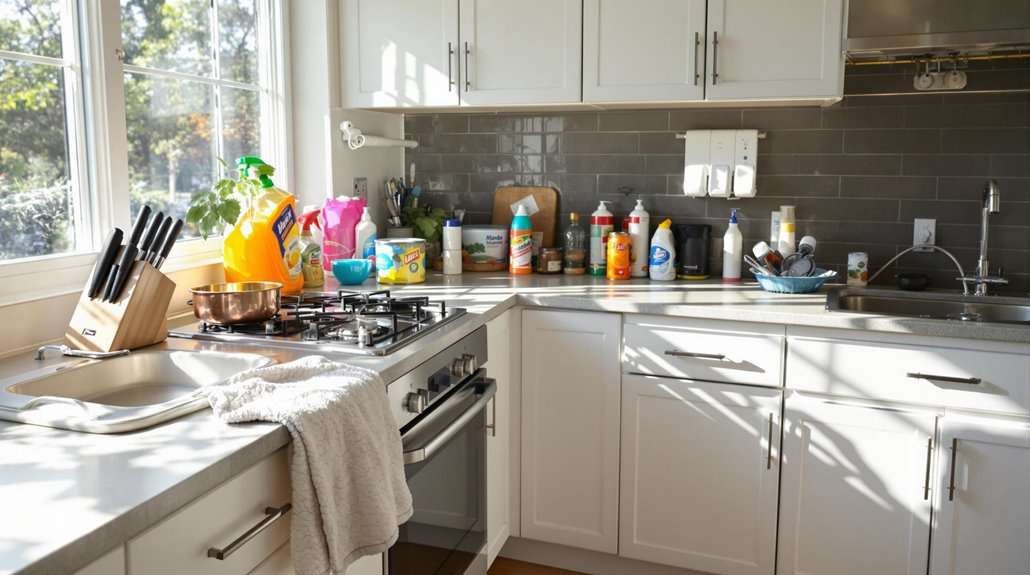
Safeguarding kitchen and cooking areas requires thorough assessment protocols that address layout efficiency, equipment safety, and food handling practices.
Regular monitoring of kitchen hazards, appliance maintenance, and sanitation practices helps prevent accidents and guarantees food safety. Effective slip risk management includes proper floor maintenance and strategic placement of non-slip mats near water-prone areas.
Key cooking safety measures include:
- Installing functional emergency shut-offs on all powered equipment
- Maintaining clean, grease-free surfaces around cooking stations
- Implementing proper food storage protocols with FIFO rotation
- Conducting regular temperature checks on refrigeration units
- Assuring accessibility of safety equipment and emergency exits
Fire prevention and emergency preparedness protocols must integrate regular exhaust system cleaning, proper storage of flammable materials, and clear documentation of safety procedures.
Bedroom and Sleeping Areas Checklist
Maintaining safe bedroom and sleeping areas involves thorough safety protocols that address fire hazards, electrical safety, and general maintenance requirements.
Essential bedroom safety measures include testing smoke detectors, ensuring clear exit paths, and properly positioning furniture away from doors and windows. Regular inspection of electrical cords and proper management of surge protectors help prevent potential fire risks, particularly during overnight hours when most residential fire fatalities occur.
Regular safety inspections and proper furniture placement create crucial escape routes, while working smoke detectors protect residents during vulnerable sleeping hours.
Sleeping area cleanliness plays a significant role in maintaining a secure environment. Daily removal of trash, proper organization of storage spaces, and regular vacuuming reduce potential hazards.
Additionally, residents must address maintenance issues promptly, such as mold or persistent odors, while ensuring all university-approved furnishings remain accessible and properly positioned for emergency egress.
Living Spaces and Common Areas Review
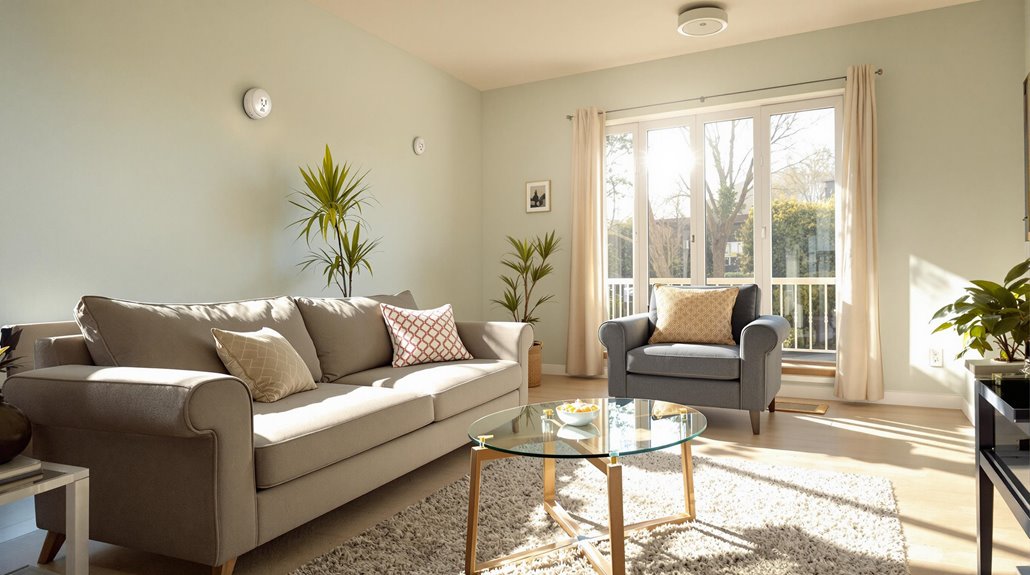
Living spaces and common areas demand thorough safety protocols that extend beyond individual bedrooms to protect all occupants of shared environments. A detailed safety assessment focuses on preventing accidents through strategic placement of furniture, proper lighting, and hazard elimination in these high-traffic zones.
Key safety measures for living spaces include:
- Installing non-slip surfaces and securing throw rugs with non-skid backing
- Positioning furniture away from walkways while anchoring heavy items
- Organizing electrical cords to prevent tripping hazards
- Maintaining proper lighting with glare-free fixtures
- Securing potentially dangerous items in labeled, locked storage
Common areas require regular monitoring to verify safety features remain effective, particularly in spaces where multiple residents interact.
Special attention should focus on maintaining clear pathways, proper illumination, and organized storage solutions that minimize risk while maximizing accessibility.
Basement and Utility Room Inspection
Because basements and utility rooms house critical infrastructure and pose unique safety challenges, these areas require systematic inspection protocols to protect both occupants and property.
Regular monitoring of basement moisture levels through proper ventilation and dehumidification systems helps prevent mold growth and structural damage. Utility room wiring demands particular attention, with careful inspection of exposed cables, outlet grounding, and circuit breaker functionality.
Safety measures include maintaining clear access to emergency equipment, verifying smoke detector placement, and ensuring proper storage practices keep flammable materials away from heat sources.
Documentation of inspections, using digital reporting tools, enables tracking of maintenance needs and compliance with safety regulations.
Regular assessment of drainage systems, foundation integrity, and pest control measures rounds out a thorough basement and utility room safety program.
Garage and Storage Area Evaluation

Garages and storage areas present distinct safety considerations that require thorough evaluation protocols and systematic management approaches. Effective chemical management and electrical safety measures form the foundation of a secure environment. Regular inspections guarantee compliance with safety standards while protecting both property and occupants.
Key safety protocols include:
- Installing GFCI protection on all portable electrical tools
- Maintaining updated safety data sheets (SDS) for chemical inventory
- Securing flammable materials in proper metal containers
- Conducting monthly fire extinguisher inspections
- Implementing extensive spill response procedures
Proper organization extends beyond basic tidiness to create systematic storage solutions. Well-maintained lighting, clear labeling of hazardous materials, and unobstructed walkways prevent accidents.
Regular safety training guarantees all household members understand proper handling procedures and emergency protocols, fostering a culture of prevention rather than reaction.
Emergency Response and Evacuation Routes
When disaster strikes without warning, having well-planned emergency response and evacuation routes can mean the difference between safety and catastrophe. A thorough emergency plan begins with clear evacuation signage and detailed room-by-room exit maps displaying two viable escape routes for each area.
These maps should highlight emergency equipment locations, assembly points, and potential hazards along evacuation paths. Regular emergency drills reinforce evacuation procedures while testing communication systems and identifying areas for improvement.
Emergency maps and regular drills are vital safeguards, revealing crucial equipment locations and testing our readiness for potential disasters.
Special considerations must address the needs of vulnerable populations, including those with mobility challenges and pets. Establishing both primary and secondary evacuation destinations, maintaining unobstructed exit pathways, and ensuring reliable emergency communications are essential components of an effective response strategy.
Updated contact information and shelter locations should be readily accessible to all household members.
Quarterly Maintenance and Updates Schedule

A thorough quarterly maintenance schedule serves as the backbone of effective property management and safety preparedness. Establishing proper maintenance frequency and task prioritization guarantees all critical systems remain functional and safe.
Building managers should develop extensive checklists that address room-specific needs while maintaining detailed documentation of all maintenance activities.
Key components of quarterly maintenance include:
- HVAC system inspections and filter replacements
- Safety device testing, including smoke detectors and CO monitors
- Plumbing system checks and water heater maintenance
- Electrical system audits and lighting efficiency tests
- Structural inspections of windows, doors, and safety features
Regular updates to maintenance schedules reflect seasonal requirements, equipment replacements, and emerging maintenance patterns.
This systematic approach helps prevent equipment failures while maintaining ideal safety conditions throughout the facility.
Bottom Line
Creating and maintaining a S.A.F.E. plan through regular home audits greatly enhances household security and emergency preparedness. By systematically evaluating each room, implementing necessary safety measures, and establishing clear evacuation protocols, families can minimize risks and protect their loved ones. Regular updates to the plan, combined with ongoing maintenance checks, guarantee that safety measures remain current and effective throughout the year, providing peace of mind for all household members.
